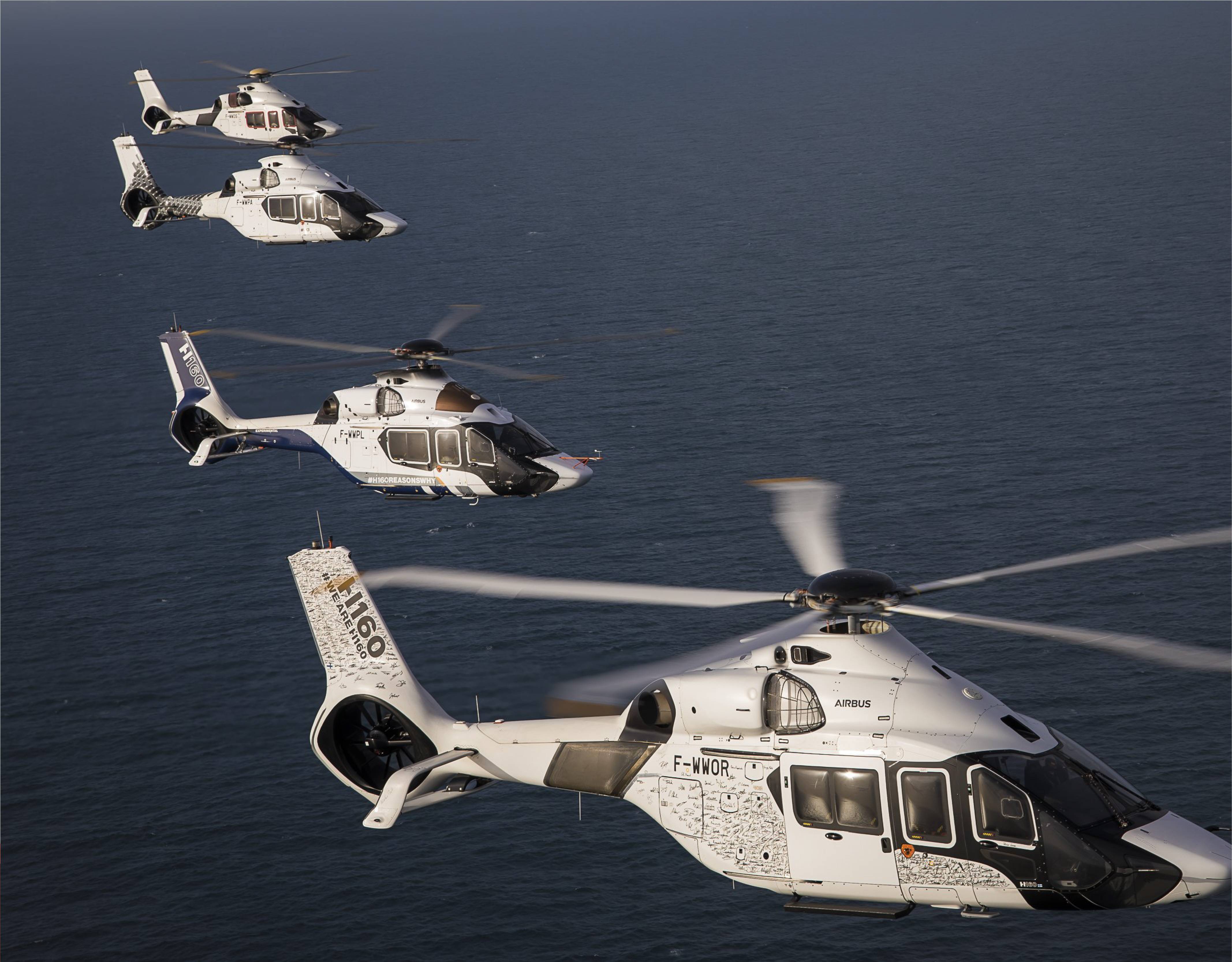
Airbus Helicopters expects its latest cleansheet design, the H160 medium twin, will be certified over the coming weeks – almost five years after its first flight. As the approval will mark the start of a new phase in its sales effort, the airframer is putting emphasis on the reduced pilot workload in the H160’s flight deck.
Advertisement
Improving safety was a major aspect of the development. Airbus’s engineers made extensive use of incident and accident feedback and determined reducing the pilot’s workload was the way to go. “Fewer actions means fewer mistakes,” said experimental test pilot Olivier Gensse.
The approach could be seen right from the beginning of a flight on H160 prototype PT3. During a demonstration sortie this month at the company’s headquarters in Marignane, France, Gensse commented on the straightforward engine start procedure. “It takes two minutes from power-on to ‘ready to fly,’ ” he said.
An over-temperature situation would cause an automated shutdown. As the pilot does not have parameters to monitor while the engine is spooling up, he or she can look at the surroundings and check passengers are ready, Gensse points out.
Such progress was made possible thanks to the Helionix avionics suite, developed in house. “To be that simple for the pilot, the interface requires a complex system architecture,” said Gensse.
An engine failure has little impact on immediate workload – even on an offshore helipad. The system manages the sudden drop in power. If the engine failure takes place during takeoff before the decision point, the four-axis autopilot will bring the helicopter back to the spot it lifted off from (with a 0.5-meter precision). The pilot will only have to use the collective-pitch control to cushion the landing, said Gensse.
If the failure happens after the takeoff decision point, the autopilot will continue the takeoff.
An engine failure simulation mode makes training safer, as it does not involve shutting down or even idling one of the Safran Arrano engines.
The H160 also features a system to detect vortex ring state (VRS), an aerodynamic condition that causes the main rotor to sink. An aural and visual warning gives the crew a five- to seven-second notice, said Gensse. The system factors in the aircraft’s total energy, acceleration and deceleration.
As the autopilot prevents the aircraft from entering a VR, the detection system is useful when flying manually. “It took us years to achieve,” said Gensse. “The main challenge was to avoid false alarms.”
The automated recovery mode the H175 inaugurated can be found on the H160, too. Through a double push on a button, the pilot can order the aircraft to come back to the latest altitude, speed and heading in level flight. The system was tested at extreme angles – plus or minus 90 degrees in attitude and plus or minus 120 degrees in bank angle. “This is no magic, however – too late is too late,” said Gensse.
A number of flight systems come as standard, such as head-down synthetic vision, a weather radar, a digital map, TCAS 2 and HTAWS (the last two for collision and terrain avoidance, respectively).
Handling qualities have been the focus of intensive work to give the aircraft great stability. Aerodynamics were refined, such as by adding strakes on the vertical stabilizer. “Via the autopilot, we also worked a lot on decoupling control inputs,” said test pilot Nicolas Certain.
The result can be seen in extreme situations. “In case of an unexpected event such as a bird strike, the pilot sometimes pulls a control to the stop, which can cause a loss of control or break the airframe; on the H160, it can cause an abrupt change in trajectory but no loss of control or failure should be feared,” said Gensse.
Advertisement
The H160’s design engineers not only wanted the helicopter to be safe, they wanted the passenger to feel safe. Comfort participates in the feeling, they determined, and this was another reason to work on vibration and noise. The H160 is intrinsically quiet enough to avoid resorting to active noise and vibration suppression systems, which saved 90 to 100 pounds (40 to 50 kilograms), Gensse claimed.
Visibility should help, too. “Large windows prevent the passenger from feeling confined,” said Gensse. They also act as safety exits. Air conditioning is also standard on the H160.
Even the autopilot is expected to help reassure the passenger. “Whoever the pilot, the helicopter will behave the same way and the passenger will have the same feeling,” Gensse explained.
The last flight in the H160 certification program took place late last year. Airbus said European Aviation Safety Agency certification is hopefully imminent and the Federal Aviation Administration is expected to validate it within six months. A maturation program will continue after the approvals so the first delivery, to an unnamed U.S. customer, will happen in the second half.
In 2016, entry into service was still planned for 2018. But Airbus faced delays due to the redesign of some dynamic components.
“We also performed a weight-saving campaign and some long-lead items had to be adapted… and we spent a lot of time fine-tuning the aeromechanical profile,” said head of program Bernard Fujarski. Certification authorities and Airbus Helicopters have “raised the bar regarding safety standards and maturity requirements at entry into service,” he added.



